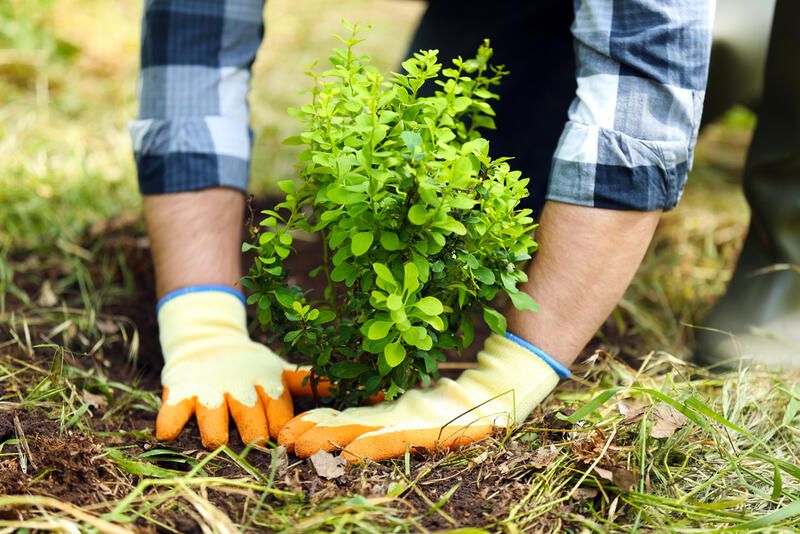
The Complete A - Z Guide on Butterfly Bush Care
Published: 23/03/2023 | Updated: 02/02/2024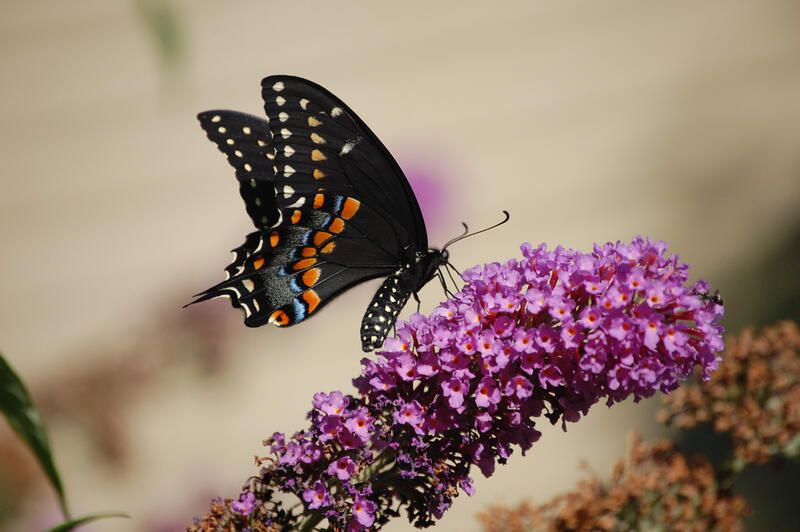
Do you intend to plant butterfly bushes in your garden this year? Butterfly bush is a lovely perennial with purple flowers that thrives in a variety of hardiness zones. It's renowned for drawing a lot of butterflies, too!


Butterfly Bush Information Guide
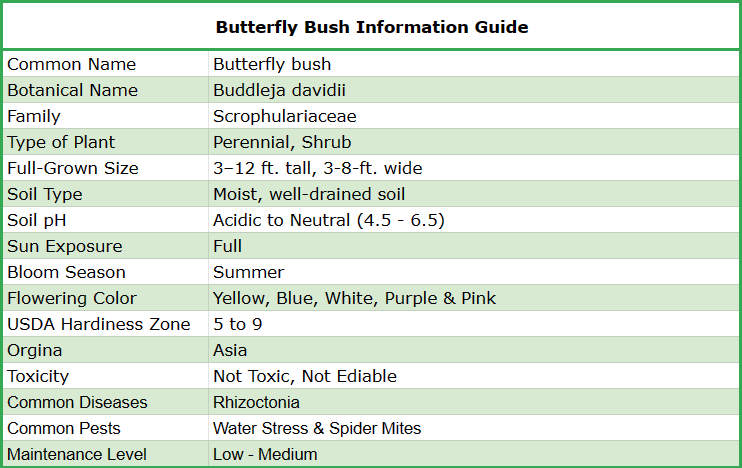
About the Butterfly Bush
Butterfly bush (Buddleia davidii), a deciduous shrub with an arching form and stunning flowers, grows best in warmer areas. Butterfly bush grows more like a perennial in colder climates, with each winter's growth dying back to the root crown and regrowth occurring in spring. Thanks to the magic of cultivar developers, butterfly bush now comes in a variety of hues, with somewhat coarse leaves and beautiful flower spikes that draw pollinators. There are many different varieties to choose from depending on your gardening interests; some can reach heights of up to 12 feet while others are modest. While some types generate flowering spikes, others produce huge flower clusters. Sage green, long, narrow leaves are supported by skinny, arching stalks.
Even weekend gardeners can enjoy the bushes' gorgeous blossoms and resident butterflies because they require minimal maintenance. However, caution is advised because this plant self-seeds so easily and is regarded as a noxious weed in some areas.
In the spring, butterfly bushes are often started from potted nursery starts or seeds. It is a plant that grows incredibly quickly and typically achieves its maximum maturity size in just one growing season.
Different Types of Butterfly Bush
Over 140 flowering plant species in various sizes and forms make up the butterfly bush, a group of shrubs. Miss Ruby and Blue Chip are little and only reach heights of 2 to 6 feet (60 to 2 meters), while Dartmouth and Blue Horizon reach heights of 13 to 16 feet (4-5 to 4-5 meters) over ten years.
Depending on your desire, there is a wide range of colors available, from vivid white flowers to pastel blue, pink, and purple blooms and the deepest magenta blossoms. Although there are many different variants, there are only two basic types of buddleja:
Modern Butterfly Bush:
Most modern kinds were created in North America to generate neater, more compact growth for patios and small backyards. Many contemporary cultivars are non-invasive and generate no seeds. The taller Miss Series, the diminutive Lo & Behold Series, and the Flutterby Series are examples of contemporary variants.
Old Fashioned Butterfly Bush:
The tallest and sturdiest types are typically the older ones. They frequently produce a lot of nectar to feed pollinating insects and are prolific flowerers. They can also generate a significant number of seeds. The English Butterfly Series, the shorter Buzz Series, "Black Knight," and "Royal Red" are among the varieties in this category.
Choosing the Right Plant for You
Buddleja is a wonderful addition to your planting ideas if you're interested in creating a butterfly garden, but there are a few things to take into account.
First, consider whether your area needs a modern, non-invasive type. It is safe to grow seedlings of traditional invasive varieties in zones 5 and 6 because winter frost normally kills them. Choose a non-invasive variety if you live in zone 7 to 9 since plants that sprout from seed dropped from your traditional kinds will survive and spread swiftly. (Butterfly bush invasive plants are more common than you might think)
Next, think about the finished size. While plants from the Miss Series are taller and better suited for mixed garden borders, shrub borders, and specimen plantings, those from the Lo & Behold series are perfect for patio pots.
What Butterfly Bush Attracts Butterflies the Most?
Buddlejas are among the best low-maintenance shrubs to grow and one of the best plants for pollinators because of how attracted butterflies and bees are to their nectar. For species like the red admiral, peacock, painted lady, comma, small tortoiseshell, brimstone, large and small white, and meadow brown, among others, they provide a well-liked nectar-rich cafe.
Some buddleja is indeed a little stronger than others, though. The Buddleja davidii, B. globosa, and B. x weyeriana species are among the greatest plants for butterflies, according to legend. But these are some of our top picks for butterfly bushes to ensure a summertime cloud of vibrant butterflies:
-
This traditional white AGM winner, "White Profusion," boasts long conical clusters of nectar-rich flowers. It is very attractive to bees, moths, and other helpful insects in addition to butterflies.
-
'Black Knight': A cascade of towering magenta flowers cover this buddleja hybrid. Awarded the RHS Award of Garden Merit (AGM), it grows to an anticipated height and spread of 9 to 13 feet (3-4m).
-
'Miss Ruby': From April until October, this little shrub is covered with pinky-red blossoms, making for a stunning flowering period and, consequently, a great attraction for butterfly activity. reaches a height of 3-6 feet (1-2m).
-
'Nanho Blue': This magnificent shrub, also known as 'Petite Indigo,' sports rich plumes of violet-blue blooms. This butterfly bush may fit in any size garden because it only grows to a height of 5 feet (1.5 meters).
-
'Pink Pagoda': B. x weyeriana cultivars entice both butterflies and bees, but the little tortoiseshell and the monarch are particularly drawn to them. This 1.5-meter (5-foot) cultivar is also referred to as "Inspired Pink."
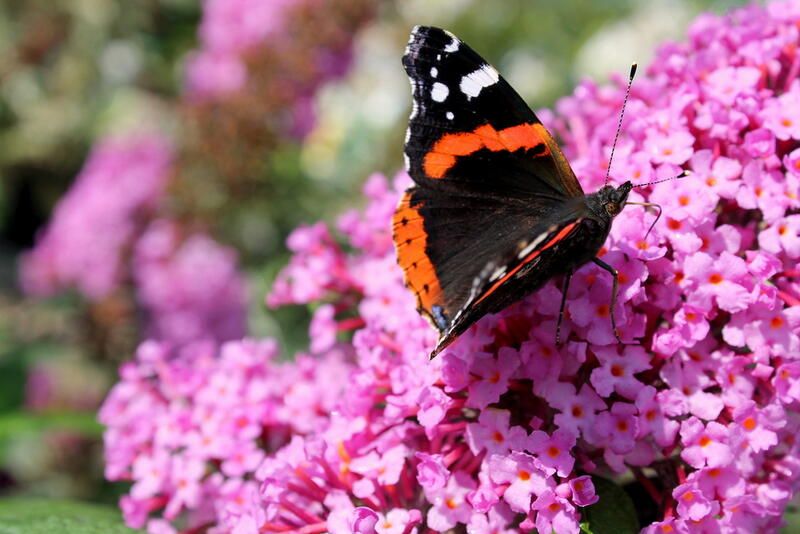
Butterfly Bush Care
It is not surprising that butterfly bushes are so popular given their aesthetic appeal, ease of maintenance, and ease of growth. These resilient bushes are relatively unaffected by even powerful storms. They flourish in challenging conditions, such as polluted metropolitan areas. They can withstand stress, drought, and insect pests.
Butterfly bush thrives in full sun, ordinary soil with medium rainfall, and well-drained soil. If you decide to plant more than one, give them a good distance—5 to 6 feet. If the soil is heavy and poorly draining, incorporate peat moss before planting.
In areas with harsher winters, butterfly bush frequently dies back to the ground and is managed as a herbaceous perennial. They can be cut back, in the same manner, to keep them under control and encourage better blooming in warm climates. This plant has the propensity to self-seed widely, so use caution. To help regulate the plant, remove the wasted flower clusters before they may disperse seeds.
Things To Be Aware Of:
Butterfly bush is regarded as an invasive plant in some parts of the United States, which is defined as a non-native species that is widespread enough to displace native plants. Because of this, many plant authorities advise against planting butterfly bushes in any situation. Before incorporating this plant into your landscape, consult your local agricultural extension office if you are unsure of its status there. And if you do decide to grow butterfly bushes, consider sterile or seedless kinds over others.
Light
Butterfly bush needs full light (at least six hours per day), and if planted in shaded settings, they will become weedy and sparse.
Temperature & Humidity
Butterfly bush planting time, butterfly bushes thrive in all of their hardiness zones (zones 5 to 9), although in zones 5 and 6, anticipate it to die back to the ground in the winter.
Water
This plant prefers a medium level of moisture, and it struggles in either an environment that is too dry or too wet that doesn't drain effectively. They only need 1/2 inch of water per week from irrigation or rain to grow.
Soil
Any typical soil that is well-drained and receives typical amounts of precipitation can support the growth of this plant. It requires slightly acidic to neutralize soil with a pH between 6.0 and 7.0.
Fertilizer
Apart from a thin coating of compost applied to the root zone each spring, this plant requires no fertilizer.
Pruning
To encourage sustained blooming up until the first frost and lessen the likelihood of self-seeding, butterfly bush flower spikes should be swiftly removed after blossoming. This plant develops quickly, and each spring, a complete ground-level pruning encourages vigorous growth and abundant flowering. Even in warmer climates where the plant is an evergreen shrub, doing this is frequently a wise choice.
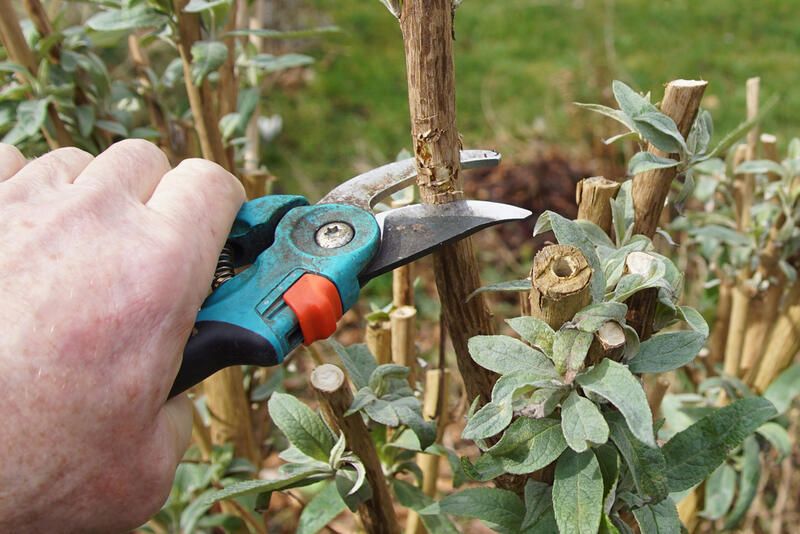
Propagating
Since this shrub spreads so easily, it's uncommon to want to try to grow more of it. However, if you do, collecting the seed heads will provide you with lots of seeds to replant wherever you like
But, if you have correctly picked a sterile, seedless type of butterfly bush for your garden, seed multiplication is not an option. The best method for propagating one of these non-patent types is to root branch cuttings. Here is how you do it:
-
Throughout the summer, cut a 4- to 6-inch piece off the tip of a healthy branch using sharp pruners. Just below a sound bud, cut. Take out the leaves from the cutting's bottom third.
-
Plant the cutting in a little pot filled with a mixture of peat moss and perlite after dipping it in rooting hormone powder. Wet the potting soil.
-
Place the plant in a plastic bag to keep the moisture in and place the container somewhere bright, but out of the direct sun.
-
Roots should appear in three to six weeks (tug lightly on the stem; if you feel resistance, roots are present). At this point, you can either transplant the cutting into the garden or a larger pot.
Growing Butterfly Bush from Seeds
Because the butterfly bush self-seeds so easily, "how to do it" is so ridiculously obvious. The stray seedlings that appear around a parent plant can be easily transplanted. Moreover, dried flower heads can be used to collect seeds, which can then be stored and planted in the correct area the following spring.
Yet, it's more likely that you'll use store-bought seeds for one of the sterile varieties that are currently offered. In that situation, direct sowing the seeds in the chosen place will produce sprouting and full-grown plants by the end of the first growing season.
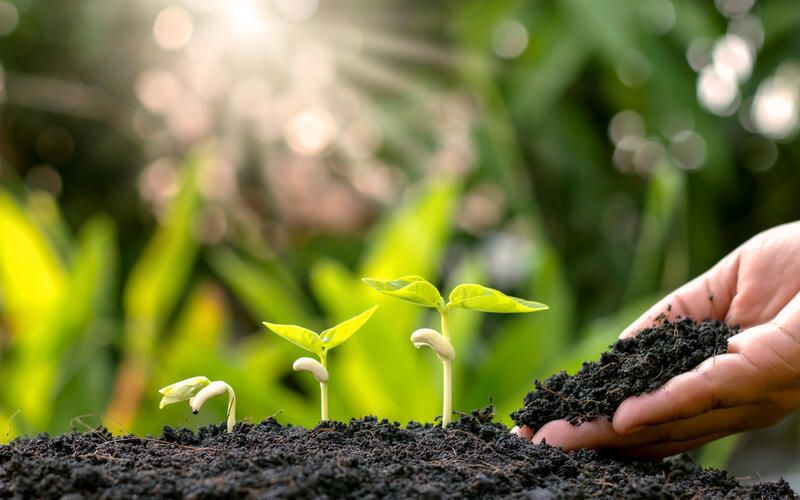
When & Where to Plant a Butterfly Bush
Butterfly bushes will grow thin and spindly and flower very poorly under trees. They require at least six hours of sun every day, but the all-day sun is preferred. Butterfly bushes may grow in just about any acceptable, well-drained soil, but they like extensive preparation before planting, so add garden compost or bagged planting mix to the soil.
Butterfly bushes can be planted in the spring or in the early to mid summer. While preparing the location, immerse the root ball in a bucket of water. Mulch your garden after planting with bark chips or any weed-free material to stop weeds from sprouting.
It's preferable to allow butterfly bushes as much time as possible to establish themselves before they encounter the difficulties of the cold, wet season because they may sustain some winter damage in cold locations. Keep butterfly bush planting to spring through mid-summer, especially in USDA zones 5 and 6, to give the plants enough time to establish a strong root system that will keep them alive through the winter.
Use a well-drained planting mix for them if you're included them in your summer container ideas and place the container on pot feet to lift it just off the ground and let any excess moisture drain away quickly. Otherwise, the roots may rot.
Potting & Repotting
If you choose the right kind and care for it properly, the butterfly bush is a great option for creative container gardening ideas.
Choose just contemporary types that don't grow larger and won't scatter seeds that will germinate in the gaps in your paving. The Lo & Behold Series variants are perfect. For your garden planter ideas, buddleia varieties like "Petite Blue Heaven," "Nanho Blue," "Summer Bird Snow," and "Buzz" are also excellent choices.
To ensure proper drainage, use a large container that is 18-24in (45-60cm) across and place it in a sunny location on three pot feet. Partially fill the container with new, moist potting soil, then position the plant so that its compost is about 1 inch (2.5 cm) below the rim.
A level finish is achieved by adding more potting soil and compacting it well around the buddleja roots. Cover the area with gravel or bark chips, and then thoroughly water in a liquid feed.
Maintain the flowers deadheaded and wet throughout the summer. In colder climates, relocate the pot to a protected location for the winter. In the spring, prune, then relocate to a sunny location.
Overwintering
However, certain dwarf varieties, like the Lo and Behold and Pugster series, only reach heights of 2 feet or less and are ideal for growing in containers. The majority of butterfly bush species are too large to grow well in containers. Fill a large pot (of any material) with standard potting soil and a little amount of compost. The pot should be twice as deep as the nursery container.
In colder climates, the potted butterfly bush should be placed in a protected spot and cut down to the soil line to protect the roots over the winter.
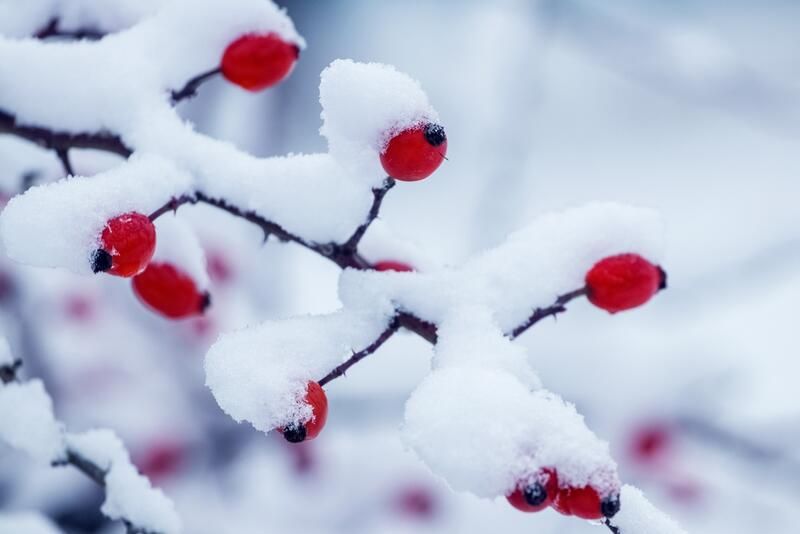
Common Diseases & Pests
Although nematodes and spider mites can produce difficulties in the South, there are no significant pest or disease issues with the butterfly bush.
Spider mites make tiny dots on leaves, which progressively color the leaves grey or bronze. The leaves may also develop silky webs. If predatory insects are not present, spider mites frequently become out of control. Alternatively, you may use horticultural oils or pesticides based on pyrethrin to get rid of them, however, you should be careful that these could also wipe out helpful insects. The butterfly bush will bloom profusely from the beginning of summer through the end of the season in generally favorable growing conditions (plenty of light, moist but well-draining soil). One of these situations occurs when plants don't bloom:
Nematodes harm leaves in the form of yellow patches. Because there is no cure, the damaged plants must be removed and destroyed.
Getting Butterfly Bushes to Bloom
The butterfly bush will bloom profusely from the beginning of summer through the end of the season in generally favorable growing conditions (plenty of light, moist but well-draining soil). One of these situations occurs when plants don't bloom:
-
Inadequate sunlight These plants require at least six hours of direct sunlight each day to bloom.
-
Either too much or not enough water. Butterfly bushes want good moisture, but not excessive wetness. Too much moisture can lead to root rot, which hinders the development of flower buds. Moreover, a drought may force a plant to delay blossoms to conserve energy.
-
Too cold in the summer. Butterfly bushes require temperatures of at least 75 degrees Fahrenheit to grow, so if your summer was unusually cool, the plants might not have produced any flowers that year.
-
Far too deeply planted. Although they often self-correct by the next season, potted nursery plants may not bloom in their first year if they are planted too deeply. Nursery specimens should be planted at the same height that they were in their pots.
-
Grasshoppers or beetles harm the flower buds and may be devoured by an extremely big-eating beetle or grasshopper infestation. The plants typically bounce back for the next year.

Common Problems
Without a doubt, butterfly bush's propensity to spread aggressively, if not uncontrolled, is the most common complaint. Removing the plant and replacing it with one of the increasingly popular seedless, sterile kinds is often the best solution for many people.
By routinely cutting off flower heads before they dry out and release seeds, removing all stems at the end of each growing season, and methodically pulling out the volunteer seedlings as you find them, you can reduce the invasive spread.
FAQs
Can I grow a native Buddleia species in North America?
No. The majority of the Buddleia species are aliens from China's hilly regions. For fans of native plants, a variety of native milkweeds are preferable.
What is the Best Way to use Butterfly Bush?
Butterfly bush is typically planted near the back of mixed borders, where the tall flower spikes can be seen but the foliage is hidden by foreground plants because the majority of cultivars are quite large with coarse foliage. Nonetheless, it works nicely when combined with other blooms in butterfly gardens or cottage gardens. It is not a very good specimen shrub.
How Old is a Butterfly Bush?
A specimen that is 20 years old is extremely ancient for the species Buddleia davidii; a lifespan of 10 years is more typical.
What Distinguishes Butterfly Weed from Butterfly Bush?
These are very separate plant species, despite having similar common names, even though they both have a well-deserved reputation for luring butterflies and other pollinators.
Asclepias tuberosa, often known as butterfly, weed, is far more cold-hardy than butterfly bush, growing infrequently to a height of more than 3 feet and being suited for zone 3. Instead of spikes, the orange or yellow flowers appear in clusters. Although butterfly weed is frequently seen growing along roadsides, there are also varieties created for use in landscaping. For those who are interested in native plants, butterfly weed is a suitable option because it is native to North America and is not regarded as a foreign invader.



